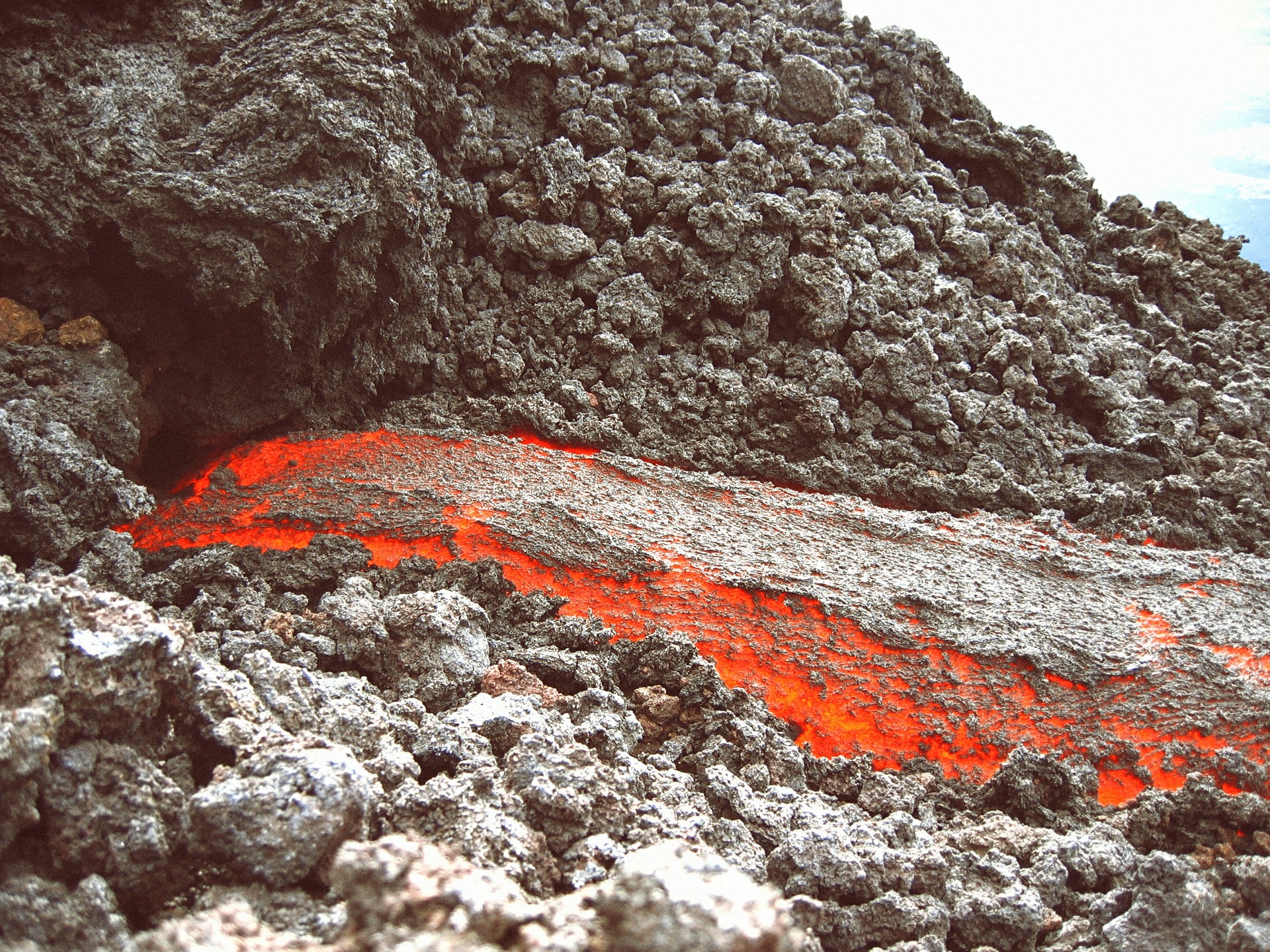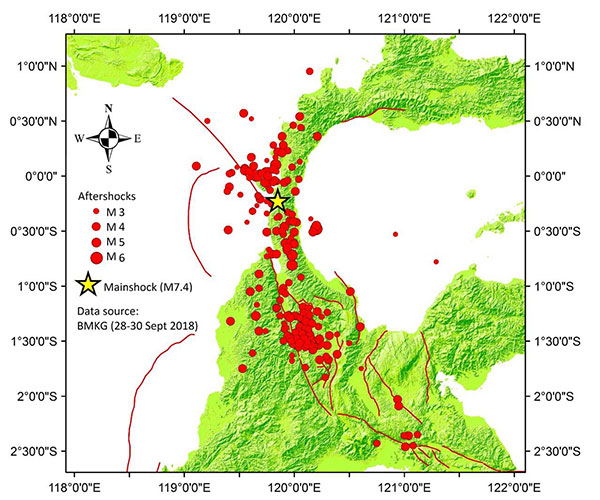Soputan Volcano in north Sulawesi erupts five days after the neighbouring magnitude-7.5 Palu earthquake – Was the eruption triggered by the earthquake?

An eruption from Soputan volcano commenced at 08:47 local time on 3 October 2018, producing a dense ash plume that rose 4 kilometres (km) above the summit and drifted west and northwest. This event occurred five days after the magnitude-7.5 Palu earthquake that caused a disastrous tsunami. The epicentre was located at a depth of 10 km and about 600 km to the west-southwest of Soputan volcano.
Could the eruption have been triggered by the earthquake?
Earthquakes and volcanoes are intimately linked through plate tectonics. Examples of earthquake-volcano interactions namely include the 1975 eruption of Kīlauea in Hawaii, 30 minutes after the M 7.5 earthquake below Mauna Loa or the 1960 eruption of Cordon Caulle in the Chilean Andes, 38 hours after a M 9.5 earthquake off the coast of Chile.
Due to the complexity of the interacting processes and the limited number of observations of such events, this question has commonly been investigated by combining statistical and physical approaches.

Statistical analyses of earthquake and eruption databases reveal an increased rate of eruptions within 6-10 days of an earthquake and in a radius of about ten rupture sizes from the epicentre (i.e. up to ~1500 km from Palu in the present case). Although some statistical trends suggest that approximately 0.4% of all eruptions are triggered by earthquakes, physical models support a lower number. Post-earthquake volcanic eruptions may thus not be uniquely driven by earthquake triggering.
Soputan has had seven eruptions of similar magnitude between 2004-2016, which suggests an annual probability of eruption slightly above 50%. Regarding the 3 October eruption, the Center for Volcanology and Geological Hazard Mitigation (CVGHM) recorded a notable increase of seismicity throughout September. Seismic activity intensified on 2 October when gas emissions, rockfalls, and summit temperatures increased, indicating the presence of magma near the surface. As a consequence, the Alert Level was increased to 3 (on a scale of 1-4) on 3 October, soon after which an eruption started.

Therefore, was the 3 October eruption of Soputan triggered by the 28 September Palu earthquake?
On the one hand, the two events are sufficiently close in space (600 km) and time (6 days) to satisfy statistical trends derived from global datasets. On the other hand, monitoring data from CVGHM suggests that the volcano was getting ready for eruption prior to the earthquake. The eruption is similar in style and magnitude compared to recent events. Thus it is hard to ascertain whether there is a causal relationship between the Palu earthquake and the Soputan eruption.